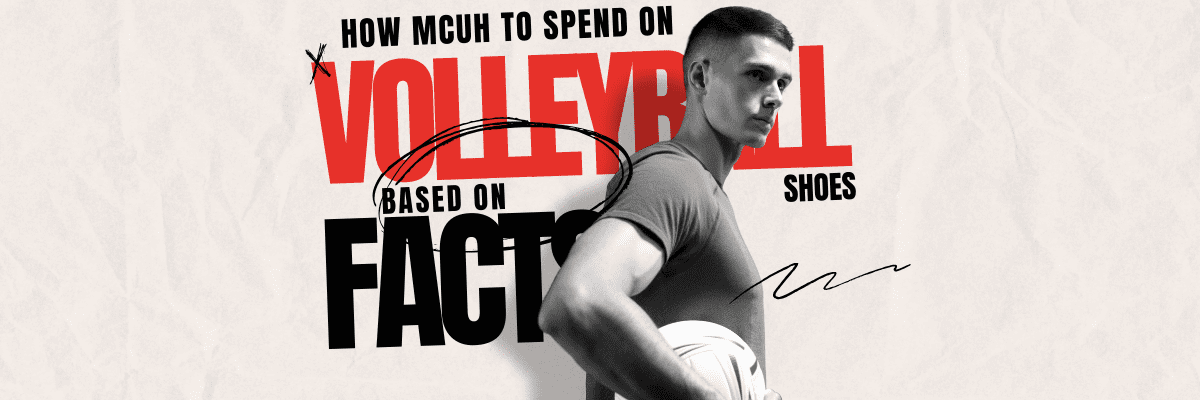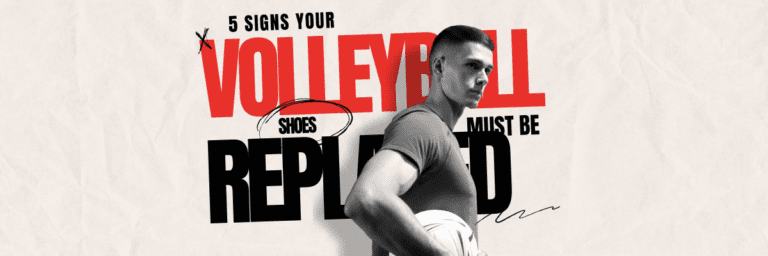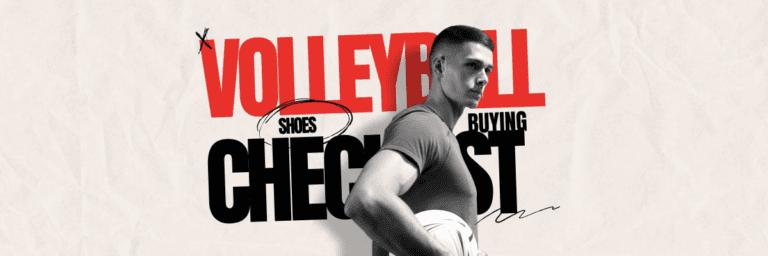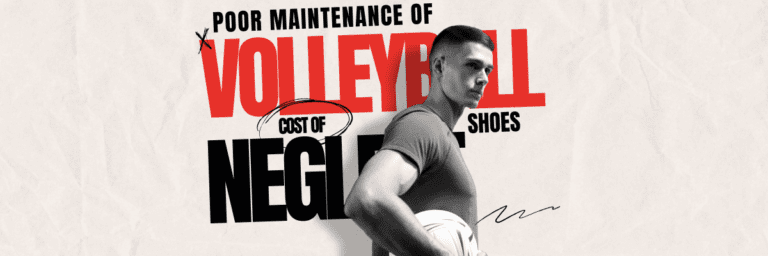How Much Should You Spend on Volleyball Shoes?
Introduction
Hey, you! Yes, you, the one who’s been rocking those worn-out gym sneakers on the volleyball court. Ever find yourself slipping when you’re about to make that killer serve?
Or maybe you’ve noticed that your feet ache like they’ve just run a marathon after every game? If any of this rings a bell, then you, my friend, are in desperate need of some volleyball-shoe enlightenment.
Briefing
Look, volleyball isn’t just about slamming balls over the net. It’s about agility, speed, and, let’s not forget, fabulous footwork. Picking the right shoe is like choosing your sidekick in this super-speedy game of jumps, dives, and spikes.
Trust me, a good pair of volleyball shoes can make you feel like Spider-Man on the court, minus the web-shooting abilities (unfortunately). The right pair will offer you the grip, support, and comfort you need to play at your best. So, choosing the wrong shoes is like bringing a knife to a gunfight utterly pointless and possibly painful.
Thesis Statement
Unveil the Topic and Its Significance, How Much Should One Realistically Spend on a Pair of Volleyball Shoes?
So here comes the million-dollar question (or maybe the hundred-dollar question?): How much should you actually shell out for a good pair of volleyball shoes? Let’s clear the fog around this touchy subject.
Price tags can be as high as a pro player’s jump and as low as your spirits after a lost game. But what’s the sweet spot? Get cozy, because we’re about to deep-dive into the world of volleyball shoes and find out how much you should realistically spend without breaking the bank or your ankle.
The Real Deal: Why Shoes Matter in Volleyball
Role of Shoes in Enhancing Performance
Alright, let’s get down to brass tacks. You wouldn’t wear flip-flops to a job interview, right? Same logic applies here. Your volleyball shoes are the unsung heroes that can turn you from a benchwarmer to a front-row superstar.
The role of a good pair of volleyball shoes is to give you that grip for quick pivots, the cushion for those high-flying leaps, and the comfort to keep you in the game longer. Heck, with the right pair, you might even start to believe you can fly until you remember you’re not in a superhero movie.
Health Considerations (e.g., Ankle Support)
But wait, there’s more! I’m not trying to sound like an infomercial, but seriously, your health is on the line here, folks. Volleyball is a high-impact sport; you’re constantly on your feet, jumping, diving, and sprinting. Do all that in shoes lacking support, and your ankles are going to throw a tantrum.
Good volleyball shoes offer solid ankle support, reducing the risk of sprains or other nasty injuries. Think about it: better ankle support today could save you from an ankle bracelet of pain tomorrow.
Brief Touch on Potential Consequences of Bad Choices
Now, let’s talk about the dark side. Cue the ominous music. What could go wrong with the wrong pair of shoes? Oh, just a few minor things like blisters, foot pain, ankle sprains, and, let’s not forget, slipping and eating court dust!
Imagine you’re leaping for the perfect spike, and oops, your shoe betrays you, causing you to slip and miss the shot. Trust me, that’s one blooper reel you don’t want to star in.
Choosing the wrong shoes is like texting your ex at 2 a.m.—a terrible decision you’ll regret later. Your performance will suffer, you’ll be more prone to injuries, and let’s be honest, you’ll look like you’ve put your left shoe on the right foot, metaphorically speaking.
Types of Volleyball Shoes
Low-Tops vs. High-Tops
Alright, folks, let’s talk shoe styles, shall we? It’s like choosing between Coke and Pepsi, cats and dogs, Netflix, and…well, going outside.
In the volleyball world, it’s low-tops versus high-tops. Low-tops give you more freedom to move and are generally lighter. They’re like the Ferraris of volleyball shoes speedy and stylish. But remember, with great speed comes…less ankle support.
High-tops, on the other hand, are the SUVs of the volleyball shoe world. They might not win a speed race, but they’ll give you the kind of ankle support that would make a supportive parent jealous. So, what’s it gonna be?
The speedy low-top or the dependable high-top? It’s like choosing between pizza and tacos. Tough call, I know.
Outdoor vs. Indoor Volleyball Shoes
Now, where are you planning to show off your mad volleyball skills? Beachside with the sun, sand, and waves as your backdrop? Or indoors, where the only sand you’ll see is in an hourglass running out of time? Outdoor volleyball shoes are built to handle the great outdoors.
They’ve got robust soles designed to grip onto those sandy or grassy surfaces, and they’re made of materials that won’t sob and disintegrate at the first sign of water.
Indoor volleyball shoes are a whole different animal. These babies are designed for those sleek indoor courts.
They offer excellent grip on smooth surfaces and are generally more lightweight and breathable. It’s like comparing a mountain bike to a road bike; both are great, but for very different terrains.
Specialty Shoes (e.g., Libero Shoes)
Hold onto your hats, because we’re about to get specialized! Ever heard of Libero shoes? If you’re scratching your head, a libero is a specialized defensive player in volleyball.
This position requires a lot of quick, agile movements, and Libero shoes are designed to meet those specific needs. They’re the ninjas of volleyball shoes: light, agile, and ready to pounce at any moment.
There are also other specialized volleyball shoes for hitters, setters, and blockers, each with unique features to cater to the specific demands of those positions. It’s like having a tailor-made suit, but for your feet.
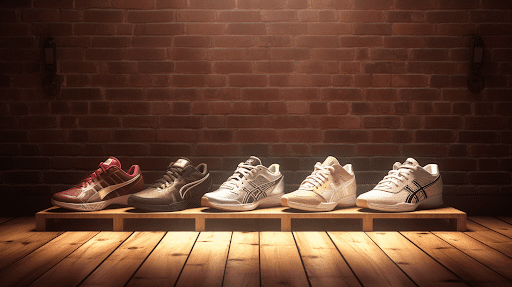
Factors Influencing Price
Material Quality
Ah, the good ol’ “you get what you pay for” mantra. Trust me, in the world of volleyball shoes, this saying holds weight, or, should I say, holds your weight on the court. You see, the material of the shoe is like the secret sauce in grandma’s legendary spaghetti. Get it wrong, and the whole dish falls apart.
Quality materials offer durability, breathability, and that sweet, sweet comfort. On the flip side, a shoe made from cheap materials will unravel faster than a mystery novel.
Leather, mesh, synthetic fabrics each have their pros and cons. Leather is durable but can be heavier. Mesh is light and breathable, but it may not last as long. It’s a balancing act, like trying to carry a tray full of drinks without spilling. However, there are numerous ways to clean volleyball shoes at home.
So, the better the material, the higher the price. No surprises there, eh?
Brand Reputation
Okay, let’s talk brands. You’ve got your Nikes, your Adidas, your Asics, and then you have those no-name brands that you find at a clearance sale. Does brand matter? You betcha!
Just like you wouldn’t buy sushi from a gas station, you shouldn’t buy volleyball shoes from a brand that’s better known for making, let’s say, kitchen appliances.
Big-name brands bring the trust factor. They’ve been in the game long enough to know what works and what doesn’t. However, this reputation often comes with a higher price tag. Think of it as paying extra for a VIP concert ticket.
You’re not just paying for the show; you’re paying for the experience and peace of mind.
Technology Involved (e.g., Shock Absorption, Grip)
Now, hold onto your seats because we’re entering the realm of shoe technology. Yeah, it’s a thing. We’re talking about gel cushioning, air mesh panels, shock absorption, and grip technology that could make Spider-Man jealous.
These aren’t just fancy buzzwords; they’re the bells and whistles that can give you an edge on the court.
Take shock absorption, for instance. This is the tech that saves your knees and ankles from feeling like they’ve been through a meat grinder after a game. And grip? Well, let’s just say a good grip can be the difference between a game-winning dive and a face-plant into the court. These technologies are like the special effects in a blockbuster movie; they make everything better, but at a cost.

The Trade-Off: Price vs. Quality
Elaboration on the Correlation Between Price and Quality
Alright, it’s crunch time. Let’s talk about that age-old dilemma that has everyone from college students to CEOs scratching their heads: the relationship between price and quality. In the volleyball shoe universe, this is a biggie. You see, it’s easy to think that a higher price automatically means better quality.
It’s like assuming every expensive restaurant serves mouth-watering food. But hey, even Gordon Ramsay finds the occasional kitchen nightmare, right?
In general, a steeper price does indicate better materials, more advanced technology, and often a more comfortable fit. However, and this is a big however, it’s not a linear equation.
Doubling the price won’t necessarily double the quality. It’s more like a curve that eventually flattens out. Beyond a certain point, you’re paying for the brand name or some extra frills that don’t really impact your game.
Discuss the “You Get What You Pay For” Aspect
You know, “you get what you pay for.” It’s every luxury store’s tagline and every bargain hunter’s nightmare. How true for volleyball shoes?
Let’s simply say that a $20 pair from a dodgy internet seller would likely behave like a $20 shoe. It may last a few games or a season, but don’t expect to leap higher than Michael Jordan soon.
On the other hand, if you pay a lot for the newest, most expensive model, you’re getting a shoe developed with more science than a space shuttle. It provides good grip, support, and may prepare morning coffee. (Not the coffee, but you get the concept.)
Highlight Exceptions to the Rule
But wait, there’s a plot twist! Like any good story, there are exceptions to this rule. Sometimes you can find a pair that’s reasonably priced and offers great value for money.
Maybe it’s an older model that’s been discounted or a lesser-known brand that’s giving the big names a run for their money. It’s like finding a hidden gem in a sea of pebbles.
And let’s not forget sales, discounts, and promotions. You might snag a high-quality pair during Black Friday sales for the price of a mediocre one. So yes, while the “you get what you pay for” adage generally holds true, keep an eye out for those golden exceptions that defy the rule.

Budgeting Basics What’s in Your Wallet?
Setting a Realistic Budget
Let’s get down to the dollars and cents, or should I say, the digs and spikes? Setting a budget for your volleyball shoes is like deciding how much candy to buy on Halloween. You don’t want to go overboard, but you also don’t want to be that house giving out toothbrushes.
The key is to find a middle ground. Take stock of what you can realistically spend without having to survive on ramen noodles for the next month.
But hold on a sec, don’t just look at the upfront cost of the shoes. Consider the lifespan too. A more expensive pair that lasts two seasons might actually be cheaper in the long run than a budget pair you have to replace every few months.
It’s like investing in a reusable water bottle instead of buying plastic ones all the time. Your wallet and your conscience will thank you.
Additional Costs to Consider (e.g., Shipping, Customization)
But wait, there’s more! And by more, I mean those sneaky little costs that add up quicker than you can say “spike.” We’re talking shipping fees, customization costs, and maybe even import taxes if you’re ordering from overseas.
It’s like going to a concert and realizing you’ve also got to pay for parking, snacks, and those overpriced souvenirs. Always factor these into your budget, folks.
And let’s talk customization. Want your name stitched into the shoe? Or maybe your team’s logo? That’s going to cost extra, but hey, you’ll look cooler than a polar bear in Ray-Bans. Just make sure you’re not blowing your entire budget on these add-ons.
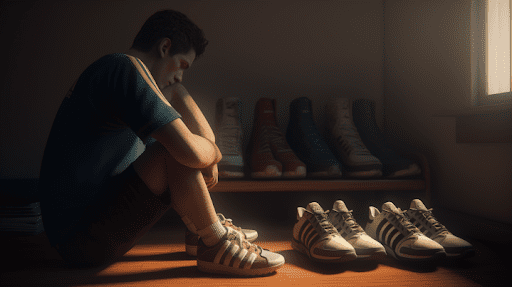
When and Where to Splurge
Ah, the fun part deciding when to open the floodgates and let those dollars flow. Look, if you’re seriously into volleyball, playing multiple times a week or competing at a high level, then splurging on a top-tier pair of shoes is a no-brainer. It’s like a carpenter investing in high-quality tools; it’s your craft, after all.
But where should you splurge? Well, keep an eye out for sales and discounts, especially during the off-season. Some physical stores might offer ‘last pair left’ discounts, and let’s not forget Black Friday, Cyber Monday, and any holiday where prices drop like a well-executed serve.
However, make sure you’re splurging in the right places. If you have a history of ankle issues, for instance, don’t skimp on ankle support to save a few bucks. It’s like saving money on a parachute; you’ll regret it when it’s too late.
Bargain Hunting 101
Seasonal Sales and Discounts
Who doesn’t love a good bargain, right? It’s like finding an extra fry at the bottom of the bag you didn’t expect it, but boy, does it make your day. In the quest for quality volleyball shoes, seasonal sales are your best friend. Black Friday, Cyber Monday, end-of-season sales, you name it!
These are the times when even the high-end brands might come down to the realm of mere mortals. Mark these dates on your calendar, set reminders, do whatever it takes. It’s like waiting for your favorite band to drop concert tickets; you’ve got to be ready to pounce!
Trusted Online Retailers
Okay, so the internet is a treasure trove of deals, but it’s also a minefield of scams and knock-offs. You don’t want to click ‘Buy Now’ and end up with something that looks like it was stitched together in someone’s basement. So, where do you go? Stick with trusted online retailers.
Websites that offer customer reviews, clear return policies, and secure payment options are usually a safe bet. It’s like choosing a restaurant based on Yelp reviews; you want to go where the satisfied customers are.
And hey, don’t forget to compare prices across different websites. Sometimes one site will offer a discount that others don’t. Just keep an eye out for additional shipping fees that might turn a bargain into a rip-off.
Second-hand Options: Yay or Nay?
Ah, the age-old question: to go second-hand or not? It’s like choosing between a vintage wine and a fresh bottle. Each has its merits, but you’ve got to know what you’re getting into.
Second-hand options can be a real money-saver, especially if you’re just starting out or need a temporary pair. Sites like eBay or even local sports swap meets can be goldmines.
However, tread carefully. Used shoes might come with wear and tear, and you don’t know how well the previous owner took care of them. Always check for clear pictures and ask for the shoe’s history if possible. It’s like buying a used car; you want the full report, not just the shiny exterior.
So, is it a ‘yay’ or a ‘nay’? Well, if you find a barely-used pair from a reputable brand, it could be a resounding ‘yay.’ But if the shoes look like they’ve been through a season of ‘Survivor,’ it’s a hard ‘nay.’
An Arm and a Leg When Is It Too Much?
Warning Signs of Overpriced Models
Alright, let’s talk about the elephant in the room: those eye-watering, wallet-emptying, over-the-top expensive but best volleyball shoes. I mean, do these shoes come with a personal masseuse for your feet or what?
So, how do you spot an overpriced model? Well, if the shoes have gold laces and diamond studs, that’s a dead giveaway. Kidding! But seriously, look out for ridiculously high prices that don’t seem to offer anything extra in terms of technology or material quality.
Another red flag is the “Limited Edition” tag. Sure, it sounds fancy, but unless you’re a collector or a pro player who needs those microscopic advantages, it’s probably not worth the extra dough.
It’s like buying a gold-plated smartphone; it does the same thing but costs an arm and a leg, literally.
The Psychology of Pricing Don’t Fall for It!
Ah, psychology, the puppet master behind many of our decisions, including how we shop. Ever notice how prices are often set at $99.99 instead of a clean $100? That’s not just for kicks; it’s to make the price appear smaller than it actually is.
So when you see volleyball shoes priced at $199.99, your brain thinks, “Hey, it’s less than $200!” Don’t fall for it; your wallet won’t know the difference.
And let’s talk about the “luxury trap.” Some brands will set the prices high just to create an aura of luxury and exclusivity. It’s like that high-end club with the long line outside; the hype makes you want to join, even if the music is the same as any other club. Remember, a higher price doesn’t always mean higher quality.
Expert Opinions and Testimonials
When in doubt, turn to the experts. And no, I don’t mean your buddy who played volleyball that one time in high school.
I’m talking about professional players, coaches, and reputable sports gear reviewers. These folks know what they’re talking about and can guide you through the maze of pricing.
Many websites and sports magazines feature expert reviews and testimonials that can offer valuable insights into whether a pair of volleyball shoes is worth its price tag.
It’s like getting travel advice from someone who’s been to the destination, not someone who just saw it in a movie.
The Golden Middle Path: Value for Money
How to Evaluate the Cost-Effectiveness of a Shoe
Alright, amigos, we’ve talked about the high-end splurges and the bargain-bin pitfalls. Now let’s find that elusive golden middle path to getting the most bang for your buck. or, in volleyball terms, the most spikes for your strikes!
Cost-effectiveness isn’t just about finding a cheap pair; it’s about balancing quality and price. It’s the volleyball shoe nirvana where your feet, your game, and your wallet live in perfect harmony.
So, how do you find this Zen state? Start by looking at the features you absolutely need, like solid ankle support if you’ve got a history of sprains, and then see what options provide that without all the extra bells and whistles.
Do you really need neon flashing lights on your soles? Probably not. Unless you’re playing a night game with no lights, in which case, you’ve got bigger problems.
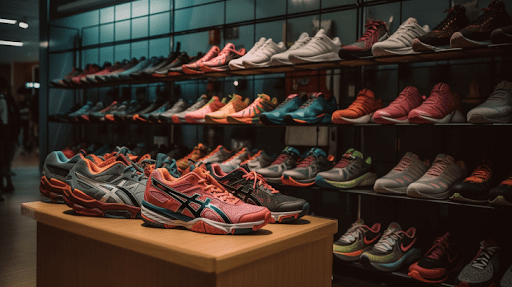
Recommendations for Best Value Options
Ready for some name-dropping? If you’re looking for reliable brands that offer good value, consider Asics, Mizuno, or even some Adidas models. They offer a range of options that balance quality and cost.
Think of them as the “middle children” of the volleyball shoe world; they may not get all the attention, but they’re often the most well-balanced.
Another pro tip? Look for last season’s models. They’re often discounted, but are still solid choices. It’s like getting last year’s iPhone; it still works great, but it’s not the latest and “greatest.”
Personal Experience & Case Study
Now, let me share a little story. A buddy of mine, Jains, was dead set on getting the most expensive pair of volleyball shoes he could find. He thought he’d jump higher than a kangaroo on a trampoline. Long story short, he got the shoes but also got a nasty blister after the first game. Why? Because he went for the glitz and ignored the basics like proper fit and material.
On the flip side, another friend, whom we’ll call Digger, went for a mid-range pair from a trusted brand. She’s been using them for two seasons now with no issues. Moral of the story? More expensive isn’t always better, and value for money is where it’s at.
Conclusion
Summarize Key Points
Whew! If you’ve made it this far, give yourself a pat on the back or, better yet, a high-five. We’ve covered the volleyball court from baseline to baseline, talking about the importance of shoes in your game, the different types, and the factors that play into their cost. We’ve also dived into the murky waters of budgeting and emerged triumphant with tips on finding value for your hard-earned cash.
Restate the Thesis in Light of the Discussion
Remember how we started this journey? We asked the million or perhaps more realistically, hundred dollar question: How much should you realistically spend on a good pair of volleyball shoes? And now, armed with all this wisdom, the answer is clear as day. It’s not about finding the cheapest or the most expensive pair; it’s about finding the right pair for you. It’s the pair that meets your needs, suits your level of play, and doesn’t make your wallet cry for mercy.
Final Thoughts
So, pause at the shop or over the “Buy Now” button online. Consider what you’ve learned and what matters as you select the greatest volleyball technique. Great shoes won’t make you an Olympic player, but they might offer you the confidence and support to play well. Who knows?
Maybe you’ll tell folks about the greatest volleyball shoes. Ultimately, it’s more than shoes. Invest in love, games, and yourself. In volleyball, like in life, steps determine your journey. Be careful to walk properly and wear suitable shoes.
Frequently Asked Questions (FAQs)
What are the key factors to consider when choosing volleyball shoes?
Shoes’ performance benefits, ankle support, and position-specific demands are most crucial. Good shoes provide grip, cushioning, comfort, and durability. Your volleyball shoe budget should also take into account your playing frequency and level.
Are high-tops better than low-tops for volleyball?
The best is subjective and depends on your demands. Superior ankle support comes at the expense of speed and agility. Low-tops are lighter and more flexible, but they may not support the ankle.
How do I set a realistic budget for volleyball shoes?
Consider short- and long-term requirements. Consider both the initial cost and the shoe’s lifetime. Include shipping and customization expenses. A budget limits your selections and reduces overspending concerns.
Is it safe to buy volleyball shoes online?
Yes, but choose recognized vendors with user ratings, explicit return policies, and safe payment choices. Compare costs among sites and check for extra delivery expenses.
Can I buy second-hand volleyball shoes?
Can, but be careful. Used shoes may have wear and tear, and you don’t know how well they were maintained. If you go this route, request extensive photos and shoe histories.
Are expensive volleyball shoes always better?
Not necessarily. While costlier products generally have better features and materials, you may be paying for the brand name or unneeded additions. Always weigh pricing against needed features
When is the best time to buy volleyball shoes?
Try to find Black Friday or end-of-season deals. You may acquire high-quality shoes for a fraction of the cost during these sales at many retailers and online platforms.
What are some reputable brands for volleyball shoes?
For trustworthy, affordable brands, try Asics, Mizuno, and Adidas. These companies provide excellent and affordable alternatives, making them a decent starting point for most gamers.
Do I need specialized shoes for different volleyball positions?
While optional, libero and setter shoes might have distinct characteristics. These are more critical for high-level gaming and may not be needed for beginners.
How can I tell if a pair of volleyball shoes are overpriced?
Avoid excessive pricing without comparable features or quality. Beware of “Limited Edition” branding that may raise prices without adding value. When in doubt, seek experts and testimonies.

